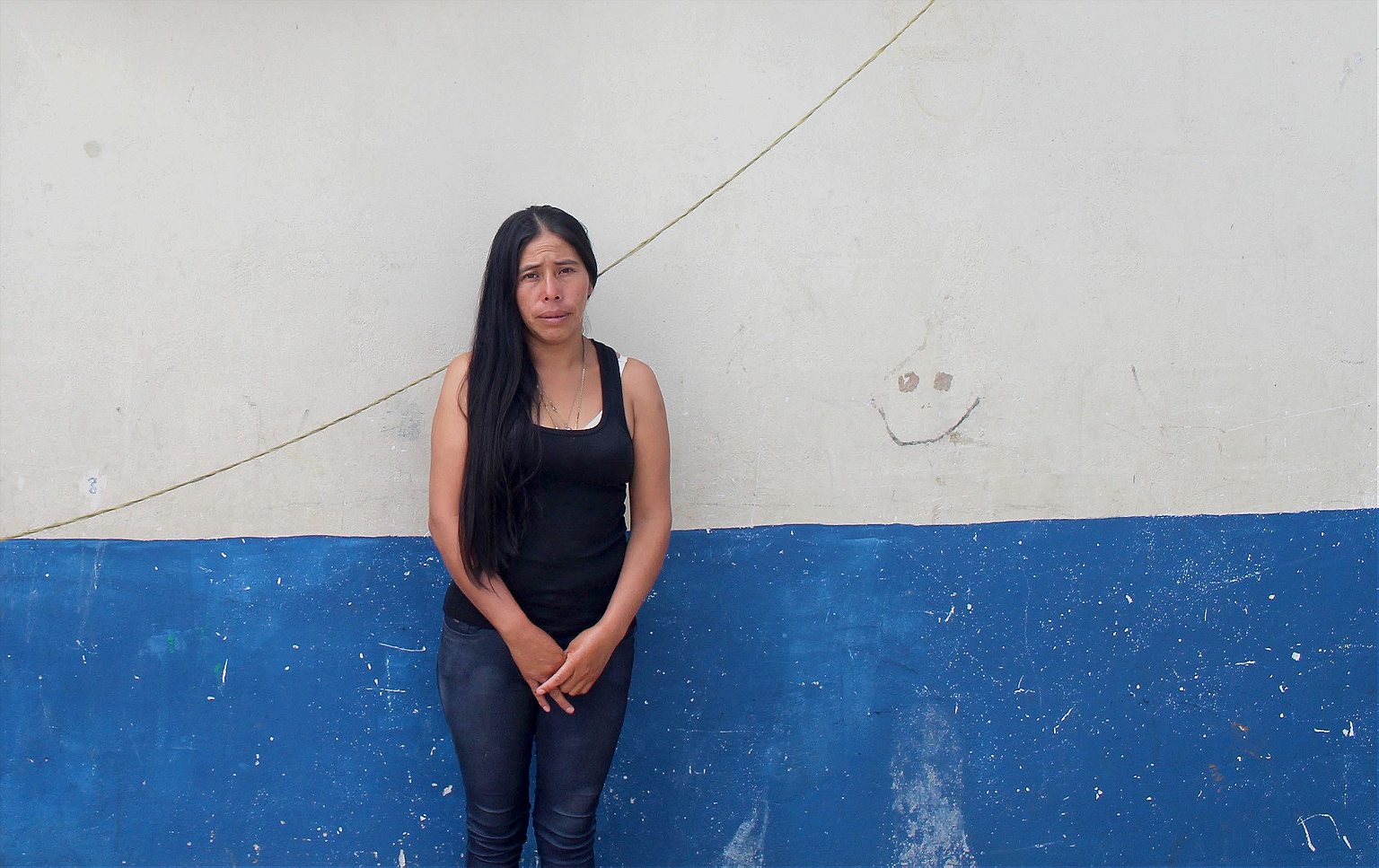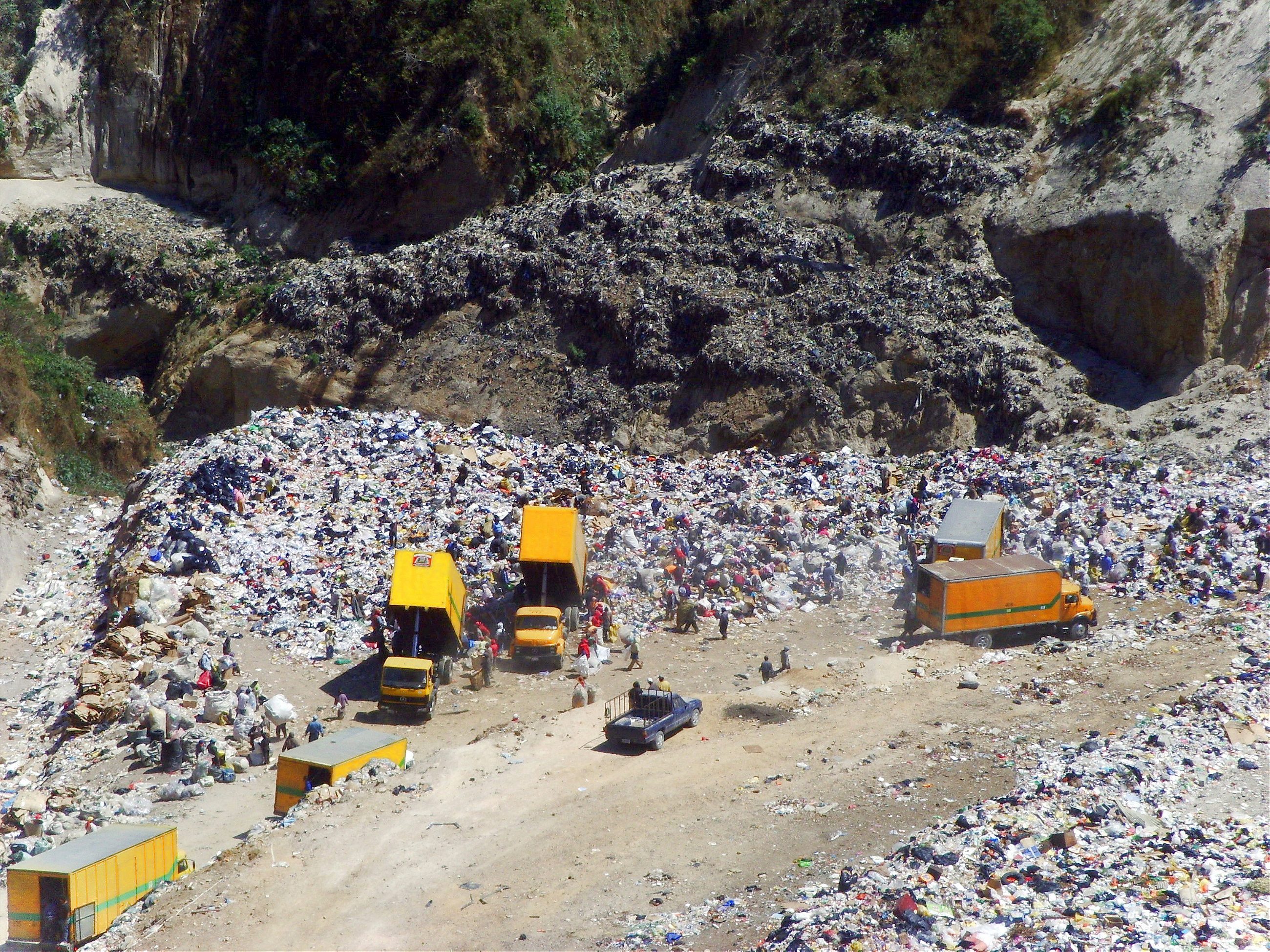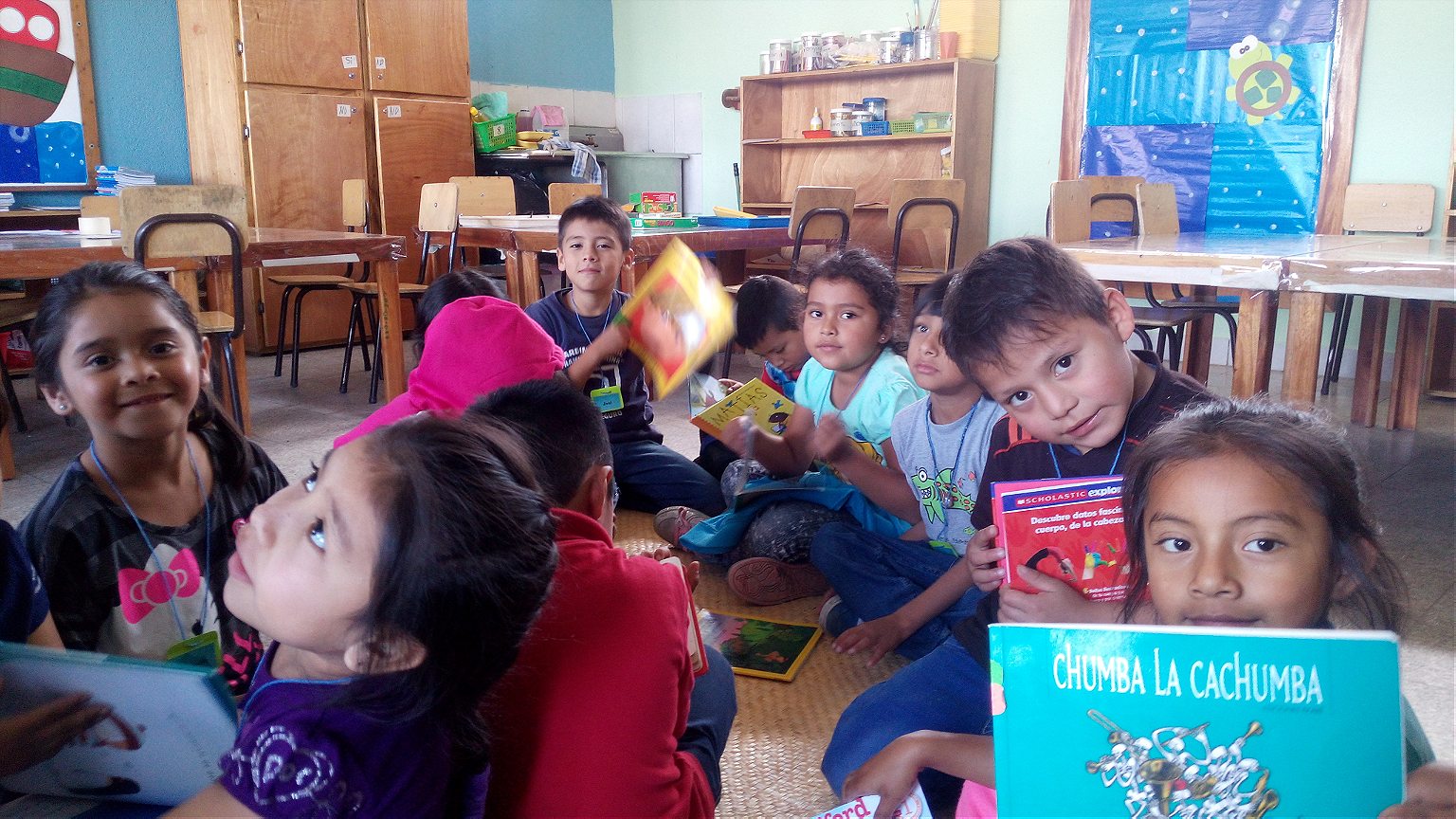A day in the life of a family living in one of Central America’s largest dumps.
Large plastic bags filled with recyclables block the doorway to Maria Cedillo’s tin-roofed house on the outskirts of Guatemala City’s vermin-infested landfill, which is the size of eight soccer fields. The petite Mayan woman has just finished sorting through valuables from her earlier scavenging, materials like plastic, glass, and aluminum that she can sell for a small profit.
For decades, Guatemala’s most desperate have set up camp near the capital’s basurero, or dump. From the public cemetery overlooking the heaps of trash, vultures sit perched in a leafless tree, scowling at the yellow garbage trucks that form a serpentine line to discard the city’s refuse. Trash pickers—guajeros in Spanish—stand ready to pounce on the newest shipment of goods.
In cities around the world, from Rio to Manila, thousands live and work in garbage dumps as a last resort. This is Cedillo’s workplace, where the mother of four digs through mountains of trash with her bare hands, always mindful to avoid the scuffles that often break out over garbage from wealthier neighborhoods.
On a recent cloudy morning, the stifling smell was intensified by the heavy rainfall of the day before, a common occurrence during the rainy season from May to October. Cedillo, with caramel skin and long, sleek black hair, never intended to work in Guatemala City’s dump, where she must wear a mask just to bear the choking smell.
Around 6 a.m., Cedillo gets up from the bottom bunk bed she shares with her daughters and starts making breakfast: eggs and beans if she has the money, just coffee if she doesn’t. Between 7 a.m. and 8 a.m., the kids leave for school, exiting the black door to the family’s home and walking up a dirt road.

Once they are gone, Cedillo dresses in jeans, tennis shoes, and a hoodie. Then, she heads off in the opposite direction, navigating through laundry lines and alleys lined with bags of recyclables down to the dump, a ravine with eight levels of trash, some of which are disappearing due to landslides. With hands weathered by more than a decade of trash picking, Cedillo scavenges through part of the three tons of garbage that arrive each day. She mainly collects glass, aluminum, and plastic, and has never been lucky enough to find an old cellphone or lost ring. For the past twelve years, Cedillo has followed the same routine without variation.
Like thousands in Guatemala, where nearly 60 percent of the population lives in poverty, working in the dump was the only option for the young mother with indigenous roots who moved to the capital in search of work. With no other connections besides a friend from home living near the basurero, she fell into the daily routine of trash picking.
“If I don’t work in the basurero, there’s no way to feed my kids,” says Cedillo, who, at 32, is already showing wrinkles around her eyes and forehead from long days outside in the sun. “That’s the only way I make money.”
In this, one of Central America’s largest dumps, trash pickers often suffer infections from needles or scraps of metal while picking through trash without gloves. Gangs have started to build a presence in the neighborhood, also known as basurero, leading to more shootouts and a higher rate of extortion. Before, residents often heard the sound of glass bottles knocking together as guajeros transported their daily findings back home through the small alleyways; now, they often hear gunshots.

Worst of all, these workers are vulnerable to fatal accidents such as fires, collapses, and landslides. In April, a collapse that left at least four dead, 15 wounded, and many more missing, has reignited the debate about whether the guajeros should be allowed to work in the contaminated basurero, where a haze of smog often hovers over the trash pickers. But ridding the basurero of guajeros is more complicated than just closing off the dump, which a government ministry recently recommended.
For Cedillo and an estimated 1,200 registered garbage pickers in Guatemala City, sifting through heaps of trash for less than five dollars a day is the only way to survive. Many others work there without registering with the city, finding an opening in the fence or descending from the cemetery. There are as many as 7,000 people making a living off the basurero, according to one estimate. Closing the basurero to trash pickers would rob thousands of people of their monthly salary without giving them a viable employment alternative.
Rumors that the municipality will shut down the basurero worry soft-spoken Cedillo. “If they close the basurero, I don’t know what I’m going to do,” she says, nervously playing with her hair and letting out a soft sigh when talking about the possibility.
The closure would mean she would be without a job, and would likely have to move back to her hometown in Nebaj, Quiche, a predominantly Mayan Ixil community about five hours from Guatemala City. Her kids prefer their own humble home, with just a bedroom, bathroom, and small kitchen. They have never visited Nebaj and only know a few words in Cedillo’s native Ixil, the language most of her family speaks.
She has talked to her kids about the possibility that she might not come home one day
There have been some changes to the lives of the guajeros in recent years to try to improve working conditions in the basurero. Cedillo had to register with the city government as a guajero and now she presents a plastic ID card every day before entering the fenced-off dump. She has a red apron she is required to wear every day, but often leaves it at home, as do the majority of the guajeros. Without anyone to enforce the rule, they can get away with it. Before, Cedillo worked whenever she wanted, but now guajeros are only allowed to work from 8 a.m. to 6 p.m. They must evacuate if an alarm sounds indicating an emergency.
Cedillo knows it’s dangerous to work in the basurero. She has even talked to her kids about the possibility that she might not come home one day. In that case, she pleads with them, “promise me you won’t go down to work in the dump.”
By 3 p.m. each day, Cedillo’s eldest son, Domingo, 14, has gone to pick up his younger siblings and they all arrive together at their overcrowded home. Cedillo is still scavenging, hoping to find as much as possible so she can buy food for dinner. “Everything they earn is to feed their kids. It’s pure survival,” says Brenda Donis, head of social work at Safe Passage, an NGO that works with families living near the dump.
When she returns around 6 p.m., she is covered in dirt and reeks of spoiled food. Her kids greet her with papers to sign for school, which she can’t read. Knowing this, her daughters try to help her by sounding out the words and encouraging her to learn. But it is just too hard for the mother who has been working all day with barely any food to eat.
Since Cedillo can’t read or write, she has accepted that there is no way out of the basurero for her, but she imagines a better life for her four kids, ages 3 to 14. Thanks to Safe Passage, Cedillo only pays about $2 per child each month for a supplementary education program, a privilege for many in Guatemala. Only 76 percent of the population is literate, one of the lowest rates in Latin America. By the time students reach 7th grade, only 40 percent are enrolled in school.

But lately, Domingo has complained that studying is too hard and he would rather help his mother by working in the basurero or migrating to the U.S. Cedillo confesses with a bit of shame that she can relate to her son, who says just seeing a notebook on his desk at school starts to give him a headache. Cedillo recently had the opportunity to study through Safe Passage, but turned it down. As an adult, the reserved woman is embarrassed to learn to read and write, although she won’t admit it to her son.
“I tell him, ‘Look, you have to study. Look where I am because I couldn’t go to school,” says Cedillo.
Still, Domingo sometimes picks trash on Saturdays against his mother’s wishes, who says she “just prays to God he keeps studying.” Cedillo’s daughters, ages 8 and 10, have bigger dreams. One wants to be doctor and the other a veterinarian. Even just imagining a life outside of the basurero is a huge feat.
“I came to Guatemala City because there aren’t many jobs where I’m from,” says Cedillo. “But when I came, I didn’t think I would work in the basurero.” Twelve years later, she is still here. Tomorrow, Cedillo will wake up and follow the same routine. She will likely do so until her youngest son, age 3, is old enough to support himself or when the city forces her out.